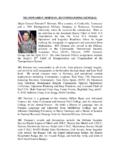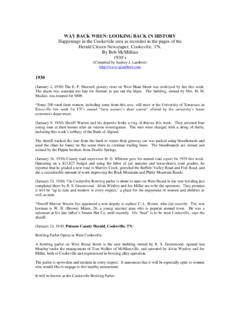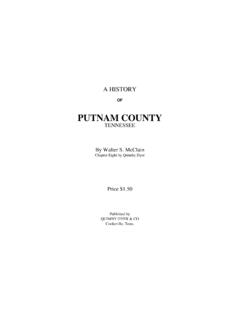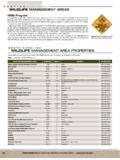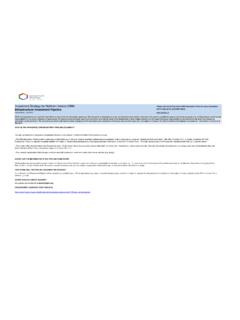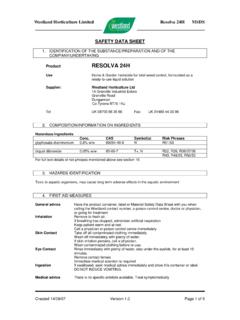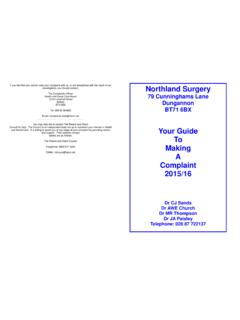Transcription of They Came Through Charleston - Denny-Loftis …
1 The Ellen Payne Odom Genealogy Library Family TreeUlster RootsUlster Roots August-September 2002 Came Through CharlestonBy Richard K. the Ulster-American Heritage Symposium, held at Rock Hill, South Carolina, this June, I learnedfrom a friend that he is building a house on land that was granted to his family in 1765. they came throughCharleston during the brief period of the South Carolina bounty and settled in Boonesborough other Scotch-Irish families share their South Carolina Assembly passed an act in 1761 to encourage settlers to come to the colony.
2 Thecolonial government would pay four pounds sterling for the passage of every poor Protestant brought toSouth Carolina from Europe. The measure was actually a benefit to shipowners who received the bountyfor the passengers they carried in their Charleston firm of John Torrans, John Greg, and John Poaug had used their influence to get the billpassed and were eager to take advantage of it. they alone of Charleston merchants had a network ofbusiness associates in Belfast and Londonderry, whom they set to work sending ships with passengers forSouth Carolina.
3 All of the ships that carried emigrants from Ulster in the bounty years 1763-1768 wereconsigned to Torrans, Greg, and three merchants petitioned for land, not for themselves, but for the settlers they would bring to SouthCarolina. In June 1762 the South Carolina Gazette reported: "We hear that application has been made to hisExcellency our Governor, by petition, for two townships, of 20,000 acres each, to be surveyed and reservedfor a number of poor Protestants the petitioners engaged to bring over.
4 " John Torrans, John Greg, and JohnPoaug were joined in their petition by the Rev. John Baxter and John and David Rea. In December 1762two townships were laid out for the petitioners: Boonesborough (named for the royal governor) of 20,500acres at the head of Long Canes Creek and Londonborough of 22,000 acres on Hard Labor first settlers, intended for Boonesborough, were already on the high seas. John Greg returned to Belfastin 1762 and advertised for passengers to sail for Charleston on the brigantine Success.
5 This was wartimeand a dangerous crossing. Seventy passengers arrived safely in Charleston in January 1763, after anadventure with a French privateer. The South Carolina treasury provided them with money for seed, farmimplements, and their support before they moved out to their own lands "between Ninety-Six and Long-Canes."The names of these early settlers were recorded by the authorities as they qualified for the bounty and landgrants. Janie Revill published A Compilation of the Original Lists of Protestant Immigrants to SouthCarolina, 1763-1773 (Columbia SC: The State Company, 1939, reprinted Baltimore, MD: GenealogicalPublishing Company, 1968).
6 Using her book, a researcher can work out what ship their ancestor sailed onand, in some cases, this is a clue to where they lived in often appointed agents to sell passage on one of their ships. In the case of the South Carolinabounty ships, individual agents recruited settlers from year to year. These agents visited places where theyexpected to sign up passengers or servants. In some cases they limited these recruiting trips to a very smallarea and presumably most passengers came from there. Most of the ships sailed from Belfast, because ofthe link between Torrans, Greg and Poaug of Charleston and Greg and Cunningham of the summer of 1763 Thomas Greg, John Greg's brother, advertised for passengers and servants to go toSouth Carolina on the ship Falls of Belfast.
7 As usually happened, sailing dates were put back several Falls reached Charleston on January 8, 1764 with 90 passengers, including some who came asservants. Belfast passengers most likely came from County Antrim or County Down, since Greg appointedagents in Lisburn, Dromore, Ballynahinch, and Prince of Wales arrived safely from Belfast in March 1764 with 170 passengers. She returned withpassengers later that year, arriving at Charleston for the second time in January 1765. The Prince of Walesmade a third voyage from Belfast to Charleston reaching the South Carolina port in March 1766 with 51paying passengers and 21 servants.
8 Matthew Rea of Drumbo, near Ballynahinch, and William Beatty ofBelfast were authorized to secure passengers for these Falls returned to Charleston on March 7, 1766 with passengers, entering from Londonderry. Some ofher passengers were indentured servants. Passengers on a ship sailing from Londonderry would be drawnfrom that port's hinterland in Cos. Donegal, Tyrone, and Belfast Pacquet arrived from Belfast October 15, 1766 "with between eighty and ninety Irish settlers,"all in good health.
9 (South Carolina Gazette, October 20, 1766.)The Earl of Hillsborough sailed for South Carolina from Belfast on Christmas Eve 1766. She reachedCharleston February 19, 1767 "with two hundred and thirty protestant settlers, encouraged by the largebounty given by this province, and the success their countrymen have met with in their several settlementshere." (South Carolina and American General Gazette, February 20, 1767.) William Beatty, as agent,advertised that he would be in three market towns, Lurgan, Ballynahinch, and Dromore, each a few milesfrom the other in Co.
10 Down, every week to meet with potential passengers. Many passengers on this shipprobably came from in or near those three Beatty also acted as agent for the Prince of Wales and made a regular circuit of Lurgan,Ballynahinch, and Dromore signing up passengers, so many on board this ship, too, came from this May 14, 1767 the passengers on the Prince of Wales, "about 250 Irish protestants arrived here fromBelfast, in order to settle in this province." (South Carolina and American General Gazette, May 15, 1767.)
